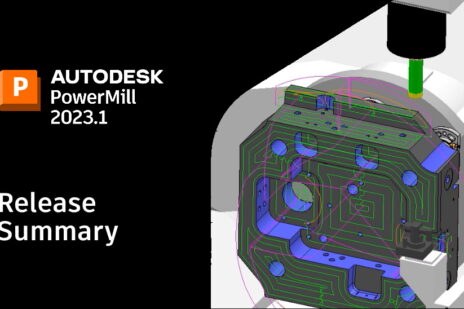
Advantages of Automatic CAM
When utilizing CAM software, one of the common requests is why can’t it be more automatic. There are many people that would like to simply load a CAD model, and have the CAM software determine the best way to mill it, then automatically program it.
While this utopia world of CAM programming may not exist for all types of parts, that precisely is one of the goals of Automatic Feature Recognition. To sort out common elements of the 3D model and using rules and templates, create the CNC code on the part.
Automatic Feature Recognition
Solid models have all the necessary information to describe a parts shape. Users should not need to waste time re-creating part data just for the CAM system. Most prismatic parts are comprised of standard features such as holes, pockets and bosses. Where other CAM systems may require users to define geometry, create boundaries, and then specify cutting operations, automatic feature recognition eliminates that. Typical 2D parts can often be programmed in just a few minutes, versus an hour or more.
Automatic vs Interactive Feature Recognition
Users can typically run a wizard to automatically find and sort the different features within their part. Typically input the stock material size, give it an initial tool orientation and the software then analyzes the solid model and creates machinable features for machining.
These features will then be listed and automatically sorted for logical machining operations. Alternatively, users that wish for fine control may select the features themselves interactively, and sort them manually.
Usually the best approach for any individual company is a combined approach of utilizing automatic feature recognition with some interactive selection or sorting of features for their personal preferences.
Feature Based machining
Once features are defined, they are sorted for machining efficiency and then they can be machined with strategies ideal to the properties of the individual feature. For example, an open pocket may be machined with a different strategy than a closed pocket. Or shallow bosses will be milled differently than tall ones.
Programming with Features
Once the features are found or selected a three-step process or wizard can be used to program parts utilizing the features. Users first select from a list of features and you may input information on shapes and sizes. Next users select a preferred machining strategy based on the information provided, or go with the recommended strategy. The programmer can accept the strategies suggested based on the type of features for rough, semi-finish, and finish passes, or make changes to fit the machining needs for that particular part.
Lastly, the combination of feature dimensions, stock material, and cutting strategies are analyzed allowing the software to recommend the most efficient cutting tools, toolpaths and feeds and speeds for each cutting operation. The programmer can choose the recommended tool or search for another tool in the library. Users can accept or change the recommended feeds and speeds.
Although automatic programming provides a good starting point, users should still retain control over how the software generates its CNC code. Users can set machining preferences ahead of time for the CAM software to apply to future jobs. Although it recommends tools, feeds, speeds, etc, the users can override it with their own preferences at any time.
From different work offsets
Automatic feature recognition can extend beyond using just the tool axis. Utilize multiple setup orientations to find all features on the part, regardless of the orientation. These will then be sorted by workplane, and feature type.
Users can then decide the order of various orientations they prefer to use, and program the features accordingly.
Built-in intelligence
Based on your manufacturing knowledge, automatic feature recognition intelligently makes decisions for you. It automatically selects your tools, stepover, stepdown, and more, providing programming consistency, utilizing parameters out of the box, or those that you customize for your own operations. These parameters, among others, form part of your operation.
As you create multiple features, the software dynamically updates your process planning. Providing an optimal machining order, based on what you want to achieve.
Part Updates
Part changes are an inevitable fact of working in a job-shop. If a part has already been analyzed and programmed, than the part geometry changes, one can simply compare the updated part to the original. Feature list will automatically update for the changes, and the generated CNC code will update.
This strategy is not only useful on part changes, but when milling similar parts, or a family of similar parts. Simply utilize automatic feature recognition to sort and program one part, tweaking with your personal preferences, then apply all of those same strategies to a similar part, automatically.
Better utilization of Workforce
Utilizing an automatic feature recognition allows the workforce to be utilized in a more efficient manner. AFR allows for standardization of the entire machining process. The best expert machinists could set up the machining templates; and all programmers, regardless of experience, would be able to utilize their knowledge and experience. This allows for consistency in your finish, tool life and overall quality of parts produced.
Conclusion
Automatic feature recognition and feature based machining can simplify the machining processes of certain parts typical to the job-shop. Allowing for programming to be completed in minutes instead of hours. Knowledge gained during the process can be retained for future jobs, for your individual preferences.


Add comment
Connect with: Log in
There are no comments